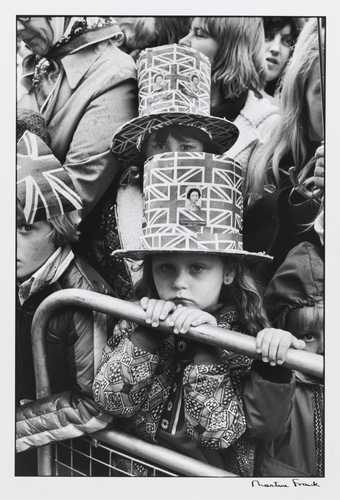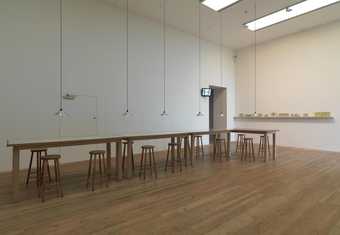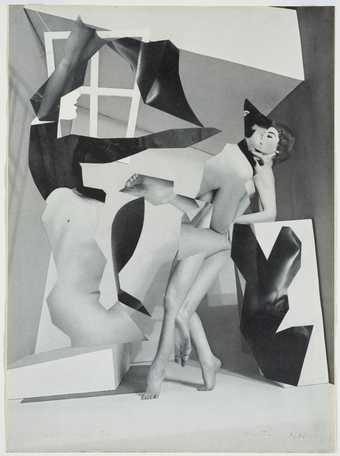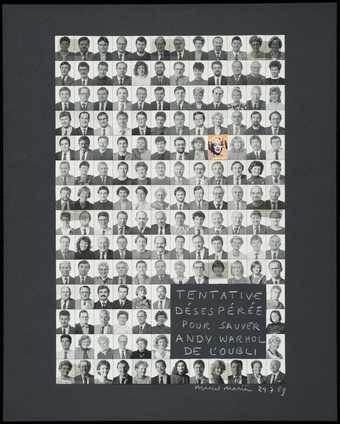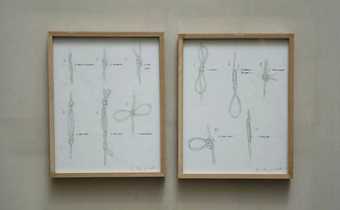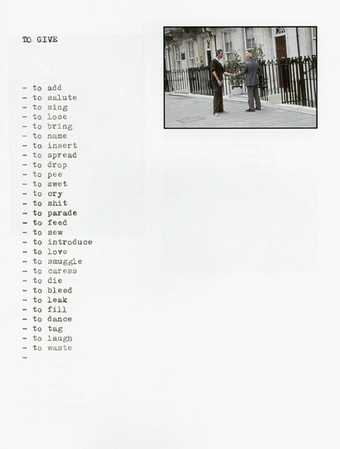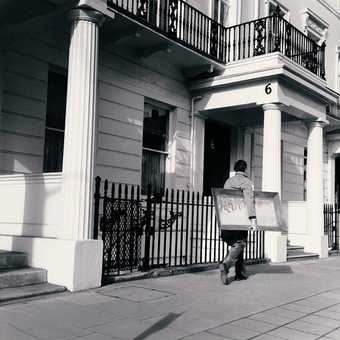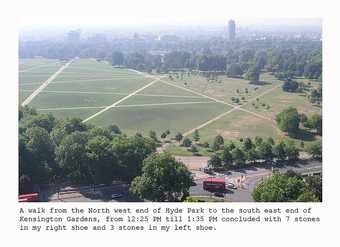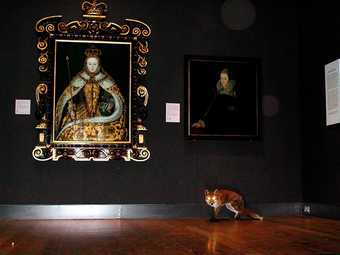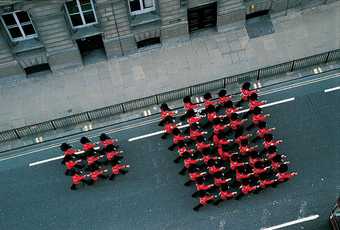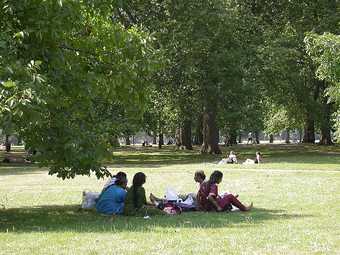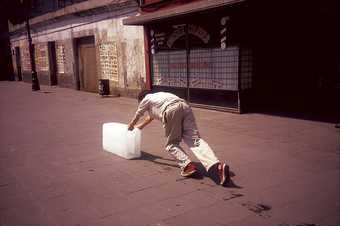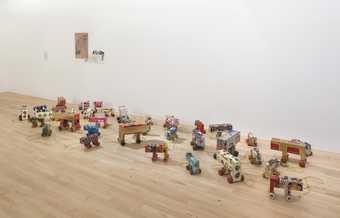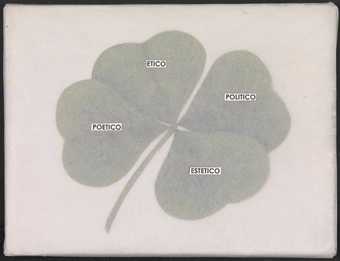
Not on display
- Artist
- Francis Alÿs born 1959
- Medium
- Video, printed papers, photographs, audio, slides and 5 drawings
- Dimensions
- Duration, overall: 9 min 15 sec
overall display dimensions variable - Collection
- Tate
- Acquisition
- Presented by Tate Patrons 2006. The Artangel Collection at Tate
- Reference
- T12194
Summary
Railings is an installation by the Belgian-born artist Francis Alÿs. It is comprised of a three-channel video projection with sound displayed in a light-locked screening room. In an adjacent space the maps, photographs and sketches that informed the development of the film are displayed in a vitrine. The film documents a performance in which Alÿs walked around various Regency squares and streets in London and trailed a wooden drumstick along the railings in front of the houses. The camera follows Alÿs from behind, occasionally cutting to a wide-angle shot to capture the broader landscape in which Alÿs’s action took place.
During its development Railings had the working title Drumming, as Alÿs sought to create an action that would uncover the rhythmic possibilities of the city. In preparation for the performance Alÿs took drumming lessons, transforming a musical activity into a means of urban exploration. As curator Mark Godfrey has observed of the film: ‘Alÿs walks around London’s Georgian squares clack-clacking a stick along their iron railings and at one point setting off a car alarm, thus turning the armour of paranoid London into a found musical instrument’ (Godfrey 2006, p.262). In creating this found instrument from the city’s architecture, Alÿs’s action recalls the performances that characterised the Fluxus movement, particularly those of the composer John Cage, who is represented in Tate’s collection by Déreau No 33 1982 (Tate P07903) and Where R=Ryoanji 10R/5 1984 (Tate T05516).
Alÿs staged his action ‘in grand, Establishment parts of the City’ (James Lingwood in 21 Portman Square 2005, p.20) in order to explore how the architecture of the city reinforces existing power structures. The railings are a physical obstacle between the pedestrian and the house they surround. While creating the work, Alÿs was in dialogue with the British sculptor Richard Wentworth, who encouraged him to see the railings as emblematic of even older seats of power: ‘Richard Wentworth suggested to me that the railings are an echo of the moat around a castle. They play a role of protection, they are a filter’ (Alÿs in 21 Portman Square 2005, p.20).
The extensive research that informed the making of Railings is documented in the installation’s vitrine. These photographs, maps and sketches, overlaid with the artist’s handwritten annotations, record the evolution of the work. The display of preparatory material is a vital element of many of Alÿs’s installations, as Godfrey has noted: ‘These items were not clearly differentiated from the discrete artworks on view, everything seemed to carry equal weight … Laying bare the process of making, in spirit if not in form, this presentation of ephemera recalled the best traditions of the Russian avant-garde, as well as classic post-Minimalist art’ (Godfrey 2006, p.262).
Railings is one of nine works in Tate’s collection from Alÿs’s series Seven Walks. The series was created over the course of six years, as Alÿs wandered the streets of London and mapped its habits, rhythms and rituals in a range of different media. In 2005 the resulting films, videos, paintings, photographs and drawings became Seven Walks; works which either documented the artist’s own walks or those enacted by others on his behalf. The art critic Coline Milliard has stressed how the series humanises the city in which it was made:
Alÿs’s walking creates a ground-level image of the city, fragmented, subjective and incomplete. It claims space for the fragile, the ephemeral and the poetic. In a commuter city where pedestrianism fights for survival, ‘Seven Walks’ transforms increasingly alienating surroundings into a new space tailored to human dimensions.
(Milliard 2010, p.4.)
Alÿs has used walking as an impetus for his work throughout his career, including in early pieces such as The Last Clown 1995–2000 (Tate T07993) and Pebble Walk 1999 (Tate T12193). Other works in the Seven Walks series include Sunny/Shady 2004 (Tate T12197) and The Nightwatch 2004 (Tate T12195).
Further reading
Francis Alÿs: Seven Walks, London 2004–5, exhibition catalogue, 21 Portman Square, London 2005.
Mark Godfrey, ‘Walking the Line’, Artforum, May 2006, pp.260–7.
Coline Milliard, ‘Walks of Life’, Art Monthly, vol.337, June 2010, pp.1–4.
Phoebe Roberts
March 2016
Does this text contain inaccurate information or language that you feel we should improve or change? We would like to hear from you.
Explore
- architecture(30,960)
-
- garden structures(1,939)
-
- park(320)
- periods and styles(5,198)
-
- Georgian(255)
- townscapes / man-made features(21,603)
- formal qualities(12,454)
-
- documentary(1,026)
- photographic(4,673)
- sound(28)
- enclosure(72)
- recreational activities(2,836)
-
- walking(144)
- actions: postures and motions(9,111)
-
- walking(607)
- UK countries and regions(24,355)
-
- England(19,202)
- London - non-specific(3,659)
You might like
-
Johan Grimonprez Dial H-I-S-T-O-R-Y Inflight
1997–2001 -
Martine Franck Greenwich, London
1977 -
Francis Alÿs The Last Clown
1995–2000 -
Marcel Mariën Sculpture Friends
1974 -
Marcel Mariën Desperate Attempt to Save Andy Warhol from Oblivion
1989 -
Francis Alÿs Knots
2005 -
Francis Alÿs The Commuters
2005 -
Francis Alÿs Pebble Walk
1999 -
Francis Alÿs The Nightwatch
2004 -
Francis Alÿs Guards
2004 -
Francis Alÿs Sunny/Shady
2004 -
Francis Alÿs Ice 4 Milk
2004–5 -
Francis Alÿs Collectors
2006 -
Francis Alÿs Untitled
2000–10


